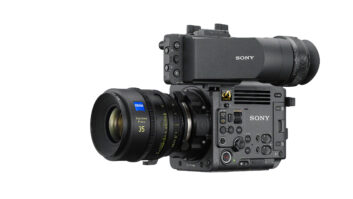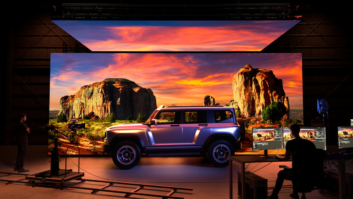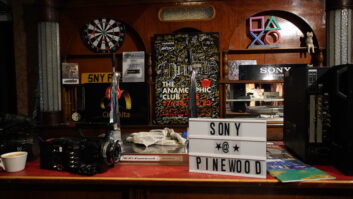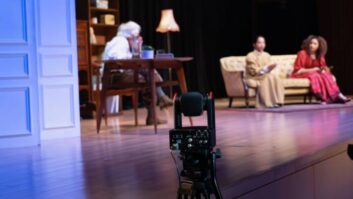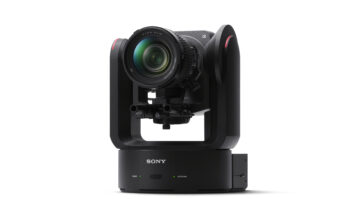Sony’s tri-camera picture stitching system will feature during the Wimbledon Tennis in June. Key games at the tournament will be recorded in 3D, reports Adrian Pennington.
As first reported in TVB Europe, the workflow of the 3D production is broadly similar to that employed at the 2010 FIFA World Cup, but with some interesting refinements.
TVB Europe is also aware of the outside broadcaster partner that will link with Can Communicate and Sony to provide the 3D feed, but we cannot reveal that until after NAB.
The workflow is as follows: Five pairs of HDC-P1 ‘box’ cams, which benefit from a smaller profile than standard bodies like the HDC-1500, will be positioned on three Quasar and two Pulsar rigs from Element Technica. The P1’s will be fitted with Canon HJ22 lenses with clutchless drives.
Each signal pair will be fed to HDFA-200 optical fibre transmission adapters. First trialled during last October’s Ryder Cup, these boxes combine 1.5Gb signals into a single 3G-capable SMPTE fibre-optic feed. The device also incorporates a viewfinder output with video, intercom and control signals for inter-axial and convergence as well as power, enabling a single cable to realise full system operation for two-camera head systems.
On leaving the HDFA each single fibre will be fed to an OB truck where the signal will be broken back out to left and right channels through a CCU and directly into a Sony MPE-200 processor.
“By enabling a pair of 3D cameras to work down a single fibre it significantly reduced the amount of fibre required, as well as speeding up the rigging process,” explained Mark Grinyer, Sony’s 3D Sports Solutions Business Head. Acquisition will be at 50i to accommodate mixing with converted shots from 2D camera angles.
An additional fixed beauty shot using Sony’s picture stitching application will also be deployed, routed to hospitality suites and possibly as part of the live feed. Images streamed from three co-sited cameras can be stitched together to form a single panoramic image. Using this an operator can create a virtual camera and position this according to the on screen action. Software can also be programmed with additional depth information to artificially create a 3D view of the scene.
“We will decide whether to operate this in 2D or 3D closer to the event,” said Grinyer.
There will likely also be a roving 3D Pulsar rig, possibly with Sony F3s, recording interstitials and additional content. There will be a separate commentary for the 3D pictures. On screen graphics will have the same look and feel as the 2D graphics and be handled by the same company providing the 2D (not contracted at time of writing).
Because of the restrictions on space at Centre Court, the production will involve collaboration between Sony and the BBC. “We will share some of the cameras and accessories to make sure we protect the paying audience from camera clutter,” says Grinyer.
The 3D broadcast is being sold to international broadcasters and it will also be shown in select cinemas (see our Arqiva story), and is likely to be shown by the BBC on Freesat.
“As with the World Cup we have to make the stereography comfortable for a cinema audience while still giving the TV audience a feel of 3D,” said Duncan Humphreys, Creative Director, CAN Communicate which is providing technical support to the production.
CAN Communicate has shot a short promo at Wimbledon which will feature on Sony’s exhibit at NAB and also in the Wimbledon museum.
It has also shot further stereo tests of Formula 1 racing cars, this time at the Jerez circuit for the Marussia Virgin team. The shoot, also conducted on P1 cameras, will be used for a promo short being sold to broadcasters and for Quantel, which is a sponsor of the race team.
CAN’s team have also spent the last three months training the crew at Berlin-based OB firm TopVision for its regular stereo recording of Bundesliga football.
